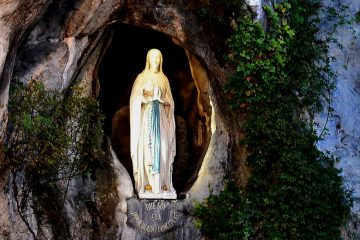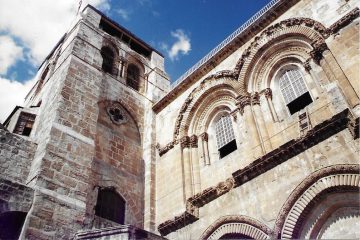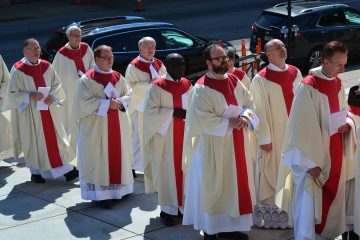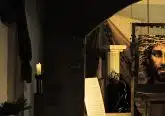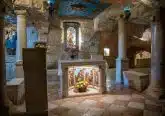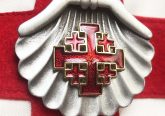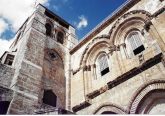‘Living stones’ help maintain Christian presence in Holy Land
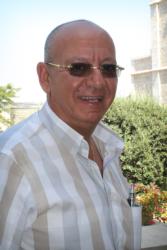
By Dale Gavlak Catholic News Service
JERUSALEM — A Palestinian Catholic tour guide whose family has lived in Jerusalem for generations and whose spiritual heritage stretches as far back as the first century church laughed as he recounted the story.
“An Israeli official once asked me if I was a Jerusalemite,” quipped Rimon Makhlouf, his voice full of incredulity at such a question. “I told him that even my great grandfather helped to build the famous spire of St. Saviour Church,” one of the Old City’s most notable towers dotting the limestone cityscape.
Makhlouf and other Catholics are the “living stones” of the Holy Land, whose presence is vital to maintaining Christianity in the place where Jesus was born, ministered, died on the cross and rose to life.
However, Catholics such as Makhlouf, who fuse their vibrant faith with their vocation, face many challenges as their community continues to shrink because of economic and political hardships.
“I hate to see Christians vanish from Jerusalem,” Makhlouf told the Catholic News Service. “So I am creating a committee of laypeople seeking partnership. Firstly, with the clerical authorities in sharing the daily decision-making affecting all of our lives.”
Finances flowing to the Holy Land often go to buildings and projects that can help local Christians, but they normally have no say in how the funds are spent or whether they can receive help.
“We are also seeking a partnership between local people and the wider body of Christ, and not just assistance from the Latin Patriarchate or the Franciscans,” Makhlouf said. The energetic, 54- year-old helped to pioneer the tour guide profession for Palestinians in the Holy Land. Prior to that, guiding was mainly the domain of Israeli Jews and the Franciscans.
Makhlouf said only about 4,600 Christians remain in Jerusalem. They face few educational opportunities or job prospects. Something like a “fifth gospel” approach possibly can help remedy the exodus of Christians.
The term “fifth gospel” is used to refer to Holy Land pilgrimages as a way for pilgrims can learn about their faith.
But the question remains: How meaningful will such tours of Christendom’s holiest sites be without the faithful presence of local believing Christians?
Young Christian families especially are leaving Jerusalem because they see no future there. Makhlouf’s oldest son, George, now lives in the United States and he is concerned about his other children. Gabi, 23, is following in his father’s footsteps as the youngest of Jerusalem’s talented tour guides, but he must find work.
Another faithful Catholic and longtime Jerusalemite, Emily Turjman, agreed.
“Life here is very difficult. Housing is limited and there is overcrowding,” said the former secretary who served at the Lasallian Christian Brothers-run College des Freres in the Old City for about 20 years. “It’s difficult to pray as you wish. You can’t live as you want. It’s not easy to live in this situation.”
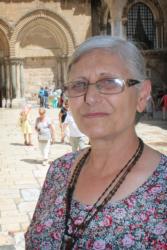
Makhlouf has quite the spiritual pedigree. Born on the Mount of Olives, he grew up in the Christian Quarter of Jerusalem, and has lived nearly his entire life there. His father is buried on Mount Zion and his grandfather’s tomb is in the Garden of Gethsemane.
He began engaging with groups touring the Church of the Holy Sepulcher at age 10 and recognized his faith calling to serve as guide to the heritage he loves as a teenager. It took years of struggle to get professional credentials because they did not exist for Palestinians. His prodding and persistence with Israel’s tourism ministry finally led to Palestinians being able to receive tour guide licenses.
“The whole world now realizes that travel to the Holy Land as a Christian pilgrim is so much more meaningful by using a Christian guide, one who will tell them about our Lord Jesus,” Makhlouf said.
“After all 80 percent of all visitors to the Holy Land are Christian pilgrims. It’s my right to talk about my church. I grew up there. It’s my faith, my place,” he said.
“We are bringing the fifth gospel alive. You won’t understand the significance of these places unless you experience them with a living stone,” Makhlouf added.
For Emily Turjman, a third-generation Jerusalemite whose Christian ancestors hailed from Lebanon and Egypt, the Church of the Holy Sepulcher is like her parish. This church was built over the site widely believed to be that of Christ’s crucifixion.
Turjman and a few other women are today’s version of the women at the tomb. They have been chosen to spend their early morning daily prayers before tourists begin arriving at the Holy Sepulchre, Christ’s burial tomb and the holiest Christian site in Jerusalem. It is earliest in the morning when the church is at its quietest, allowing for deep contemplation and prayer.
These living stones like Turjman, remain in Jerusalem for a lifetime to pray, often joining the Franciscans in most public daily Masses, but more often in private. They stand in the background while tourists sit on the few benches set up temporarily each morning for Mass at the Christ’s tomb.
Turjman has spent all of her adult years serving the church she loves both in a professional capacity and as a volunteer helping pilgrims navigate Jerusalem and participating in outings devoted to prayer.
Makhlouf has found that visitors participating in his tours have strengthened the understanding of their faith.
“When I share experiences from daily life, for example our weeklong wedding tradition, people can relate to something they’ve read in the Bible,” he said, referring to Jesus’ first miracle of turning water into wine at a wedding feast. The story itself serves as a metaphor of Christ’s own sacrifice and love for the church and he believes a Christian tour guide can relate that story best.
“The Holy Land is not a bucket list place, but a heritage place,” Makhlouf said. “You’ve come to your spiritual birthplace and you live it and learn it being on the bus or walking the streets. It’s like you’re in church, but on a daily basis and you’re living the Scriptures.”
Posted October 3, 2015



